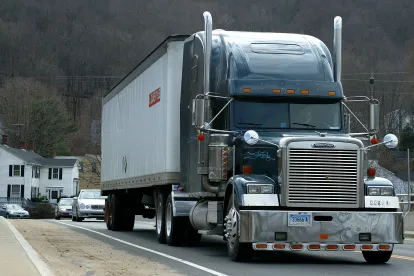A stir was created when Anheuser-Busch made news by shipping a trailer full of beer over 120 miles without a driver behind the wheel. While there was a driver in the sleeper berth ready to take over if things went awry, he never took the wheel as the semi-truck made its way from Fort Collins to Colorado Springs. The development of autonomous driving technology for trucks comes with a lot of questions and the public has voiced many of the same concerns over self-driving trucks as they have cars.
Historic Trip Reveals True Ability of Autonomous Driving Technology
When a truck is able to travel 120 miles without any assistance from a human being and can enter and leave the highway without causing an accident, it quickly dismisses any notion that self-driving technology is soon to become reality for drivers everywhere. While there are many benefits to this technology, many concerns and questions still exist in the minds of skeptics. First, let’s consider the benefits that autonomous driving may have on the trucking industry.
-
Less driver fatigue— one of the largest problems plaguing the industry is that of fatigued driving while operating a semi-truck. Many drivers are encouraged or forced to break labor laws in order to deliver their loads on time and the toll of lost sleep includes diminished reaction time and decision making skills. An autonomous truck can reduce the amount of driver fatigue by allowing drivers to get much needed rest without stopping.
-
Human error is no longer a factor— while skeptics continue to argue that machines lack the ability to make split decisions and avoid accidents that humans can, over 80% of accidents are the result of human error. Removing the humans from the equation may actually be safer.
-
Driver distraction is less problematic— distracted driving is another common cause of accidents and this is true among truck drivers as well. Autonomous driving allows drivers to multitask where they couldn’t before and to do so without placing themselves and everyone else on the road at risk.
Just as there are advantages to having self-driving trucks on the road, there are potential disadvantages that could give power to the skeptics who feel the technology is a harbinger of catastrophe. Some of the cons to autonomous trucks may include the following.
-
Drivers still need training to operate autonomous trucks— not only do drivers need additional education, but it may be cost and time prohibitive to train drivers on the operation of self-driving vehicles. Drivers need to know how to switch from autopilot to manual and when it is most advisable to do so. They also need to be familiar with other vehicle features so that they can operate the truck safely.
-
Machines cannot compensate for unpredictability— there is always going to be a “human element” when humans share the road with machines. Motorists are already notorious for unsafe driving practices when traveling in close proximity with trucks. They often fail to consider the distance needed to overtake a trailer and may travel too close when following. There are valid concerns regarding the ability of machines to predict the unpredictable.
-
Liability issues become clouded— in the event of an accident involving an autonomous vehicle, it becomes possible for the driver and his company to place blame on the machinery. The truck manufacturer can shift the blame to the operator, making it difficult to determine whether an accident was truly the result of a negligent driver or a machine that didn’t perform its advertised function.
Anheuser-Busch to Proceed Full Speed Ahead with Technology Plans
For Anheuser-Busch, there is no question regarding whether they will continue to implement the use of autonomous driving technology in the future. The company has paired with Otto, a subsidiary of Uber that is responsible for developing the technology used on the first self-driving truck journey. With 3.6 million trucks on the road covering over 279 billion miles per year, it is clear that a shift in technology will have an impact on the industry. In the minds of some, this shift will reduce costs, improve efficiency and reduce risk, while others believe that it could result in legal challenges and driver complacency and undertraining.




 />i
/>i
